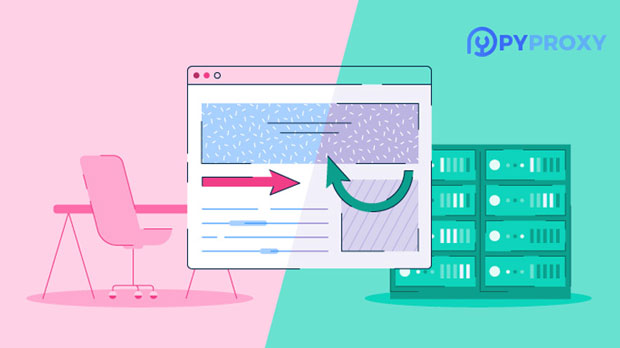What is fingerprinting technology? How does it detect proxy IPs?
Fingerprint recognition technology is a method of uniquely identifying individuals based on distinct physical characteristics, such as their fingerprints. This technology is widely used for authentication, security, and tracking purposes. In the digital world, however, "fingerprint" refers to a virtual or digital fingerprint, which identifies devices or users based on unique data collected from them. This includes information about their browser, operating system, IP address, and other metadata. The use of fingerprint recognition technology has expanded to detect proxy ips, a common tool used by users to mask their actual IP addresses. By analyzing various indicators and patterns, fingerprint recognition can identify when a proxy IP is being used, enhancing security measures for websites and online services. This article will delve into how fingerprint recognition works and how it detects proxy ips in detail. Understanding Fingerprint Recognition TechnologyFingerprint recognition, in a traditional sense, involves scanning and analyzing the unique patterns in a person’s fingerprint. These patterns are typically analyzed based on ridges, valleys, and minutiae points, which form distinctive marks that can be used to identify an individual. In the digital world, fingerprint recognition has evolved to refer to a broader concept of tracking devices and users based on digital markers rather than physical traits. A virtual fingerprint is created through the combination of several device characteristics, such as:- Browser details: Information like the browser version, screen resolution, and language settings.- Operating system information: Including details about the OS type, version, and installed software.- Hardware characteristics: Information about device type, graphics card, CPU, and more.- Behavioral data: Patterns of activity, such as the time spent on a page or the way a user interacts with a website.These elements combine to form a unique identifier for each device or user. Even without the use of cookies, this data can be gathered and used to track an individual’s behavior across websites, offering a more robust alternative to traditional methods of tracking.The Role of Fingerprint Recognition in CybersecurityOne of the primary applications of fingerprint recognition is in enhancing cybersecurity. Since digital fingerprints are unique, they can be used to create a secure, consistent way to authenticate users or track potentially fraudulent behavior. This is especially important in the context of online banking, e-commerce, and other sensitive digital interactions where security is a high priority.For example, when a user logs into an online account, the website can collect a variety of device information to create a unique fingerprint. If the same user logs in from a different device or location, the fingerprint will likely be different, signaling a potential issue. In some cases, fingerprint recognition can trigger additional authentication steps, such as two-factor authentication, to ensure that the user is legitimate.How Fingerprint Recognition Detects Proxy IPsProxy IPs are often used by individuals to hide their real IP addresses and mask their geographical location. This can be for various reasons, including privacy concerns, circumventing geographic restrictions, or even engaging in fraudulent activities. Traditional methods, such as analyzing the IP address directly, may not be sufficient to detect proxies, as they can easily be switched or hidden.Fingerprint recognition takes a more sophisticated approach. Instead of focusing solely on the IP address, it looks at various other indicators to identify when a proxy IP is being used. Here are several ways in which fingerprint recognition can detect proxy IPs:- IP address anomalies: While proxies may obscure an individual’s real IP address, they often leave behind traces that can be detected. For example, a proxy IP may be located in a different geographic region compared to the user’s usual IP address, creating a discrepancy. Fingerprint recognition software can cross-reference the IP address with other data points to spot inconsistencies. - Device fingerprint inconsistency: If a user is continuously switching between different devices or locations, it can create irregular patterns. Fingerprint recognition can detect these discrepancies and flag suspicious activity. A legitimate user will generally log in from the same device or a small set of devices, while proxy users often hop between devices and networks.- VPN detection: Many proxies use VPNs (Virtual Private Networks) to mask their IP address. However, some fingerprint recognition technologies have the ability to identify known VPN IP ranges. By analyzing the user’s fingerprint in combination with IP data, websites can detect if the user is employing a VPN to hide their location.- Behavioral anomalies: Proxy users often exhibit behaviors that differ from regular users. For example, they may access a website from multiple locations in a very short time, or they may log in at odd hours, using uncommon methods to navigate a site. Fingerprint recognition systems can analyze these behaviors and detect potential proxy use based on irregularities.Challenges in Detecting Proxy IPs with Fingerprint RecognitionWhile fingerprint recognition offers a powerful tool for detecting proxy IPs, it is not foolproof. Several challenges exist that may make detection difficult:- Use of advanced proxies: Some proxies, such as residential proxies, are more sophisticated and use IPs that appear to belong to regular users. These can be harder to detect because the IP addresses they use are often not geographically anomalous or otherwise suspicious. - Dynamic IP addresses: Internet service providers (ISPs) sometimes assign dynamic IP addresses that can change frequently. Users may seem to be switching IPs, which can trigger alarms, but this is actually just the normal behavior of dynamic IPs. In such cases, fingerprint recognition systems need to account for this and avoid false positives.- Evasion techniques: Proxies and VPNs are continually evolving to avoid detection. Some proxy services use encryption, anonymizing techniques, and other tools to disguise their activities and make it harder for fingerprint recognition systems to identify them.Despite these challenges, fingerprint recognition remains one of the most reliable methods for detecting proxy use. Its ability to combine multiple data points and identify unusual patterns makes it a valuable tool in the fight against fraud and online anonymity.ConclusionFingerprint recognition technology has revolutionized the way we approach digital security and fraud prevention. By creating a unique "fingerprint" for each user based on a combination of device information, browser details, and behavioral patterns, it provides a more comprehensive approach to tracking and identifying individuals online. When it comes to detecting proxy IPs, fingerprint recognition offers a powerful means of identifying inconsistencies, VPN use, and other forms of digital deception. While challenges remain, the ongoing development of fingerprint recognition systems promises to enhance cybersecurity and make the online world safer for all users.
2025-02-04

























































